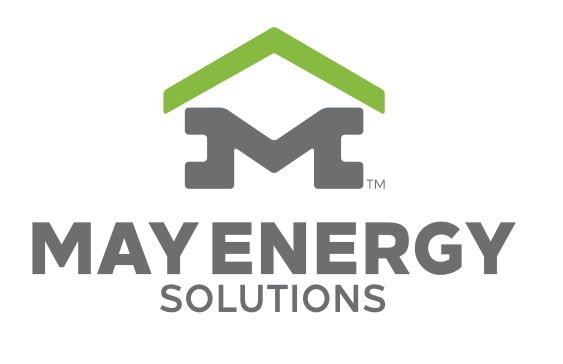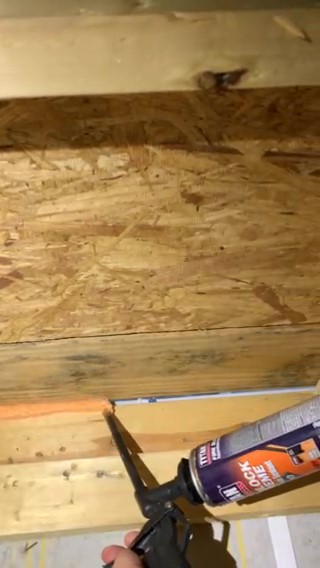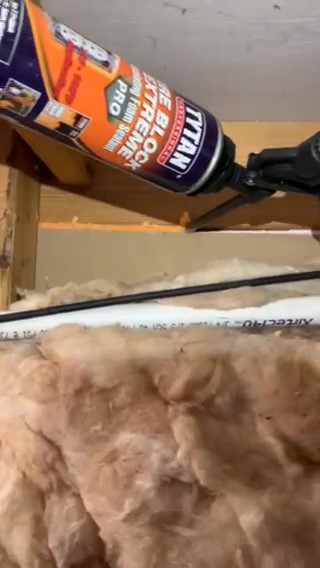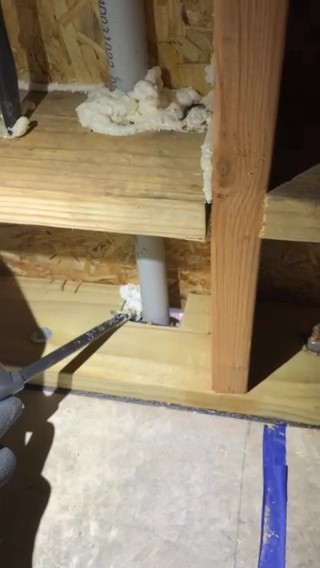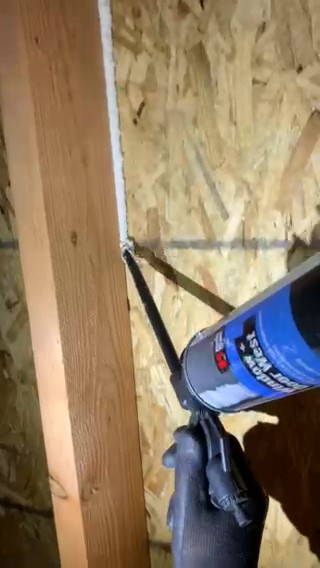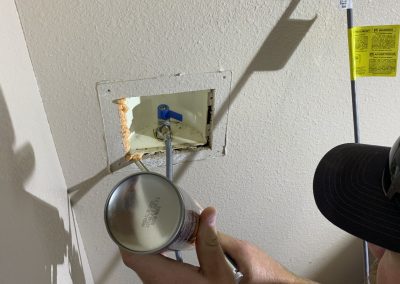Air Sealing
Air leaks can account for up to 50 % of the energy loss in your home.
For new construction, May Energy Solutions will utilize the latest materials and methods to seal the envelope of the house to keep your conditioned air inside and the Texas weather outside. Gaskets are recommended at the top and bottom of walls and around doors and windows to prevent leakage. Expanding foam is used to insulate and fill large gaps between doors and windows and the wall framing, and is also used to fill the holes drilled in the framing for electrical wiring and plumbing pipes. Foam or caulk is used to seal gaps between drywall and electrical boxes or plumbing pipes. Caulk is used to seal small gaps around door and window trim. Can lights in the ceiling are sealed with boxes made from fireproof mineral wool.
For older homes that did not have proper air sealing when constructed, May Energy Solutions can seal the typical problem areas accessible in the attic which are the penetrations in the framing for plumbing and electric, the gaps between framing and drywall, and penetrations in the ceiling for electrical boxes, recessed light fixtures, and bathroom vent fans.
Air Sealing Services in Texas
Is your home struggling with uncomfortable temperatures, rising energy bills, or drafty rooms? Air leaks might be to blame. At May Energy Solutions, we offer expert services for air sealing in New Braunfels and across Texas to help improve your home’s energy efficiency and comfort. Our skilled technicians will thoroughly inspect your home for gaps or holes that allow air to escape, often caused by construction or damage over time. Once identified, we’ll professionally seal these leaks, preventing unwanted air movement and moisture build-up. By combining home air sealing with the right insulation, you can significantly reduce energy costs and create a more comfortable living space.
Searching for a reliable home air sealing service near me? Contact May Energy Solutions today for a free estimate and take the first step towards a more energy-efficient home in New Braunfels or anywhere else in Texas!
Our Process of Air Sealing
Let’s discuss our comprehensive process of air sealing:
Home Energy Audit
We start with a detailed inspection of your home, either visually or by utilizing advanced techniques like blower door tests to pinpoint areas of air leakage. Our specialists examine windows, doors, plumbing penetrations, attic hatches, electrical outlets, and switches, identifying areas that compromise your home’s energy efficiency.
Prioritizing Sealing Areas
Based on the audit results, we prioritize sealing the most critical areas first. It can be large gaps in the attic, leaks in ductwork, or small cracks around windows and doors. We systematically address each issue using the most appropriate materials and methods. Our team carefully selects and applies caulk, foam, and fireproof mineral wool boxes to seal these problem areas, ensuring maximum coverage.
High-Quality Sealing Materials
For new constructions, we recommend using gaskets at the bottom of walls, expanding foam around doors and windows, and caulking for smaller gaps. We use only premium, durable materials such as silicone caulk for long-lasting flexibility and eco-friendly products without harmful chemicals.
Post-Sealing Inspection
Once the sealing process is complete, we conduct a final inspection to ensure every gap has been properly sealed. This might involve retesting areas to verify that no significant air leaks are remaining. As a trusted home air sealing company, our goal is to provide an air-sealed home that improves energy efficiency and overall comfort for homeowners in New Braunfels and surrounding areas.
By choosing May Energy Solutions, you’re investing in a sustainable solution to reduce energy waste, lower your utility bills, and enhance the comfort of your living space.
Why Choose Air Sealing For Your Property?
Enhance Energy Efficiency
Home Air sealing in Texas is one of the most impactful ways to improve the energy efficiency of your property. Small cracks, gaps, and seams throughout your home allow conditioned air to escape, forcing your HVAC system to work harder. By sealing these gaps, you can prevent energy loss and reduce your heating and cooling costs significantly.
Improve Indoor Comfort
Drafty rooms, uneven temperatures, and uncomfortable living conditions are often caused by air leaks. And many homeowners begin looking for a home air sealing service near me to solve these problems. Air sealing eliminates these issues, helping to maintain even temperatures throughout your home, whether in the heat of summer or the chill of winter. The result is a more comfortable and pleasant indoor environment.
Boost Indoor Air Quality
Air leaks not only waste energy but also allow outdoor pollutants, allergens, and moisture to enter your home. Air sealing acts as a barrier, reducing the infiltration of contaminants and improving the overall quality of the air you breathe inside your home. This is especially beneficial for those with allergies or respiratory issues.
Reduce HVAC Wear and Tear
When your HVAC system has to work overtime due to air leakage, it experiences increased wear and tear, potentially shortening its lifespan. By reducing the strain on your HVAC system through air sealing, you can help it perform more efficiently, which may lead to fewer repairs and a longer lifespan for your equipment.
FAQs
What materials are used in the air-sealing process?
Materials like gaskets, expanding foam, or caulk, and fireproof mineral wool boxes are commonly used in air sealing. These materials are applied to cracks, gaps, and joints in areas such as windows, doors, attics, and basements to prevent air leaks and improve energy efficiency. The mineral wool boxes are used to seal items such as recessed lights.
Can air sealing be done in both new and older homes?
Yes, home air sealing can be applied to both new and older homes. In new construction, air sealing is incorporated during the building process, and new homes are required to pass an air leakage test. For older homes, air sealing home areas such as attics, walls, and utility penetrations can retrofit existing structures, improving energy efficiency and comfort by addressing air leaks in various parts of the home.
What are the common areas in a home that require air sealing?
Common areas needing air sealing include attics, basements, crawl spaces, windows, doors, electrical outlets, ductwork, and areas around plumbing and wiring penetrations. These locations typically have gaps and cracks that allow unwanted air to enter or exit, reducing energy efficiency.
Will air sealing reduce my energy bills?
Yes, air sealing can significantly reduce energy bills by preventing conditioned air from escaping and outside air from entering. By improving the efficiency of your HVAC system and reducing the need for additional heating or cooling, you can lower your energy costs.
Is air sealing a one-time service, or does it need regular maintenance?
Air sealing is generally a one-time service, but regular inspections are recommended to ensure that the seals remain intact over time. Factors like settling, structural changes, or new penetrations may require occasional touch-ups to maintain optimal efficiency.
How do I know if my home needs air sealing?
Signs your home needs air sealing include drafty rooms, uneven temperatures, high energy bills, and noticeable air leakage around windows, doors, or other areas. An energy audit or professional inspection can identify air leaks and determine if air sealing is needed.
